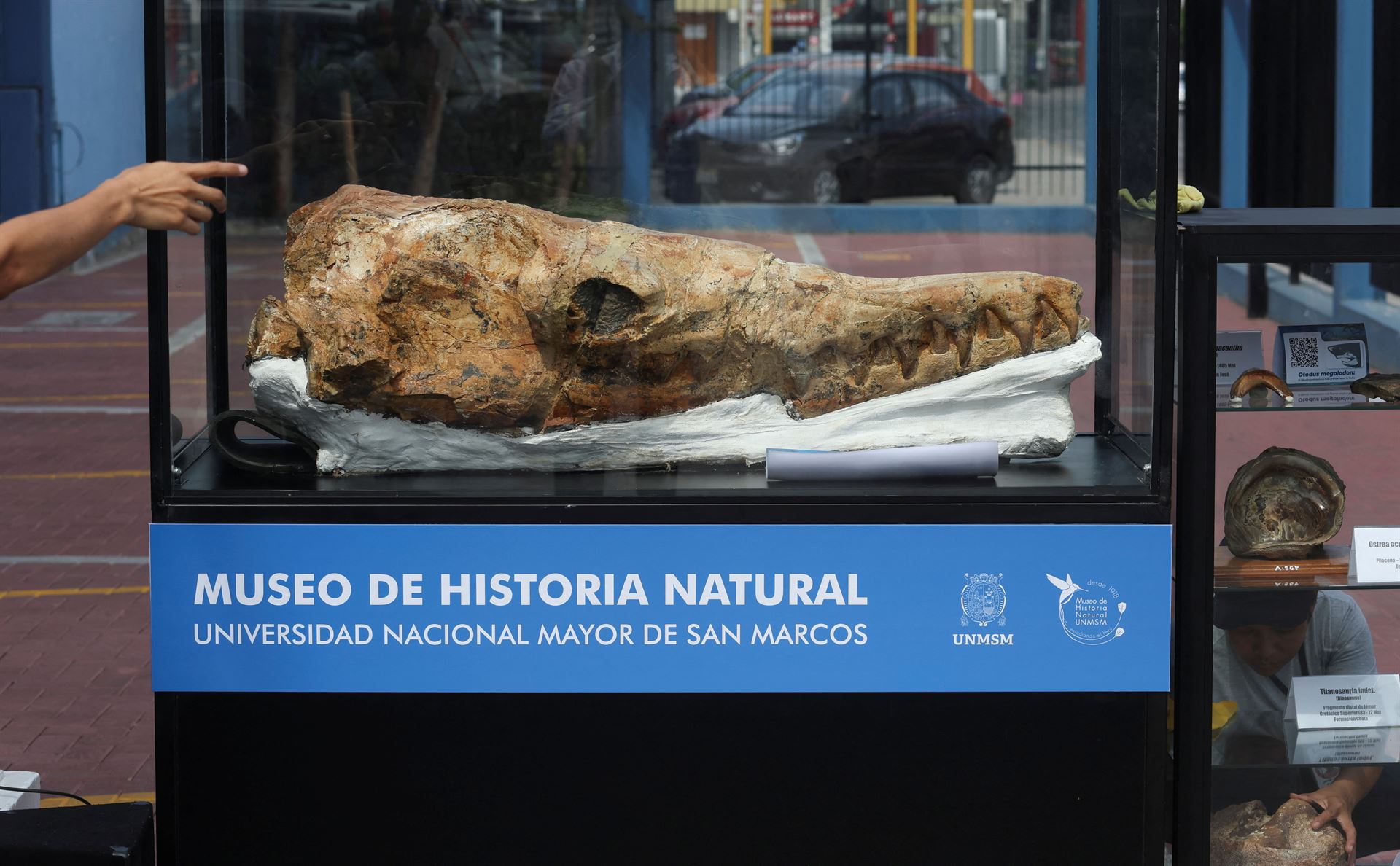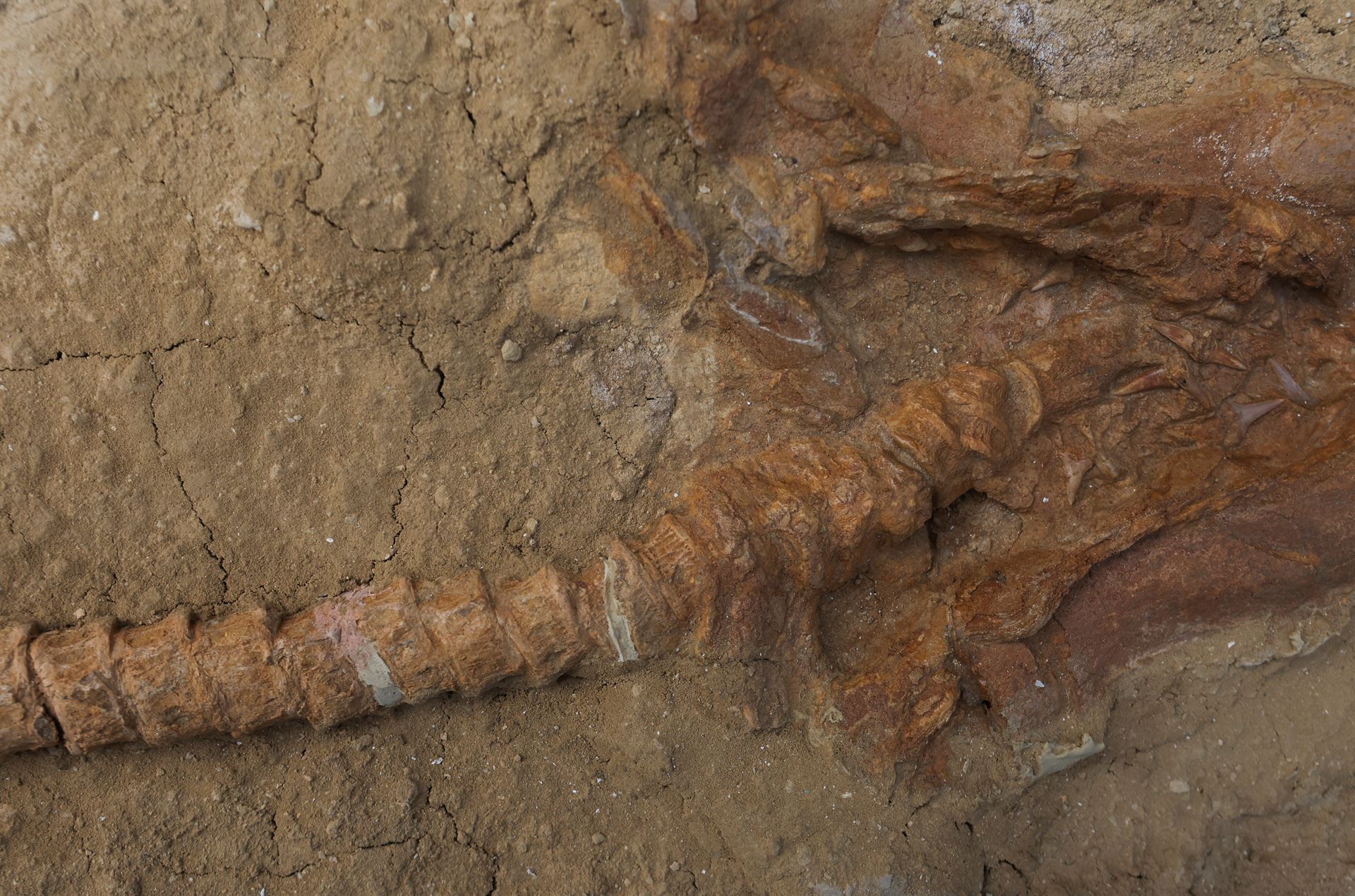
LIMA - Paleontologists in Peru on Monday unveiled the 9-million-year-old fossil of a relative of the great white shark that once inhabited the waters of the southern Pacific Ocean, where it liked to devour sardines.
The nearly-complete Cosmopolitodus Hastalis fossil was found some 235 km (146 miles) south of Lima in Peru's Pisco basin, a hot, desert area famed for frequent discoveries of ancient marine species.
ALSO READ: Jurassic highway: Hundreds of dinosaur footprints found in UK quarry
The shark is believed to be an ancestor of the great white shark. It is now extinct, but its teeth once spanned up to 8.9 cm (3.5 inches) in length, while adults could grow to near seven meters in length - the size of a small boat.

Cesar Augusto Chacaltana, an engineer at the Peruvian geological and mining institute (INGEMMET), said at a presentation the shark's remains showed "exceptional fossilization."
Researchers presented the ancient shark's remains in several glass urns, including one containing a giant, sharp-toothed jaw.
READ MORE: Young mammoth remains found nearly intact in Siberian permafrost
"There are not many complete shark (fossils) in the world," paleontologist Mario Urbina added at the presentation, adding the remains of numerous sardines were found inside the stomach.

Urbina noted that as anchovies did not yet exist when the shark roamed the open seas and oceans, sardines formed a staple diet for marine predators.
READ MORE: Genomes reveal timing of Homo sapiens interbreeding with Neanderthals
Peruvian paleontologists in November presented the fossil of a young crocodile that lived more than 10 million years ago off central Peru, where Pisco and the agricultural region of Ica are found.
In April last year, researchers displayed the fossilized skull of the largest river dolphin known to date, which once inhabited the Amazon some 16 million years ago.



